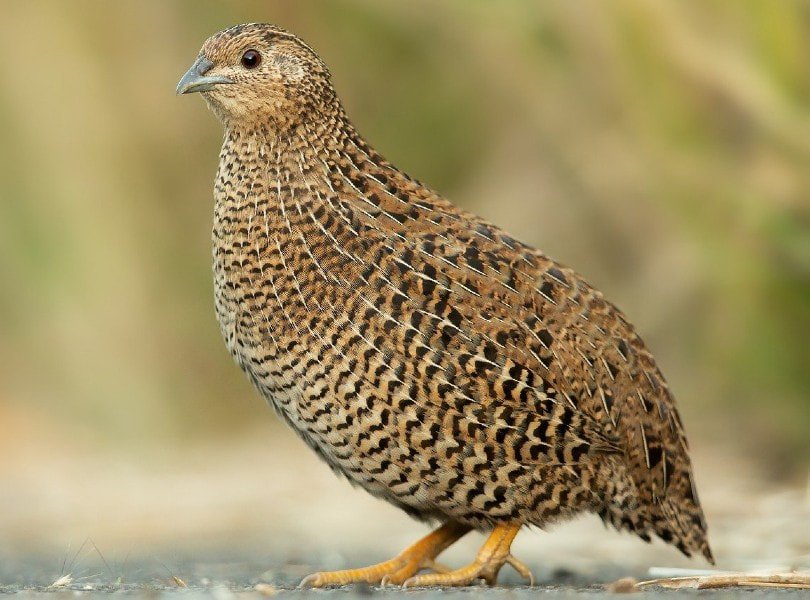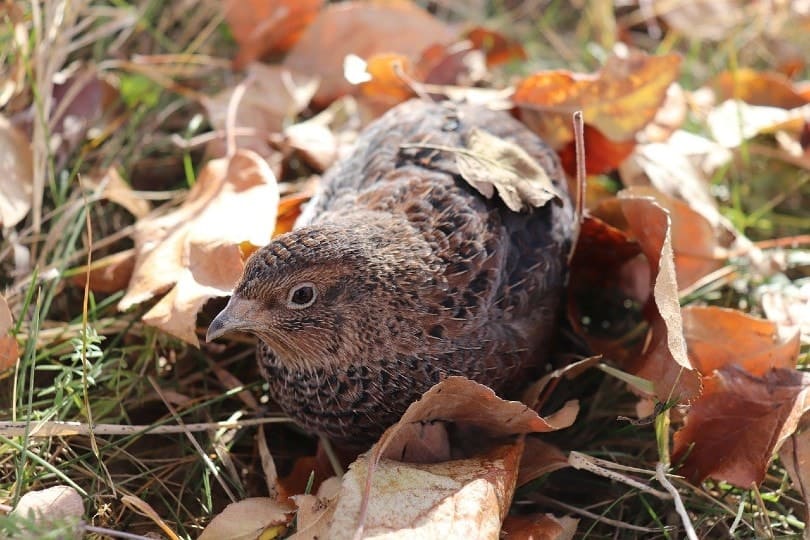The Coturnix Quail is the most popular of the 100 breeds of quail, with homesteaders and backyard coop owners. It is small, requires little room, and is easy to care for while also being quiet enough that it won’t disturb neighbors. It also offers a generous annual egg yield and highly-prized meat that offers a decent income stream even in limited space.
Read on for more information on this small poultry breed and to see whether it is suitable for your yard or farm.

Quick Facts about Coturnix Quail

| Breed Name: | Coturnix Quail |
| Place of Origin: | Japan |
| Uses: | Meat and eggs |
| Bull (Cock) Size: | 3.5-5 ounces |
| Cow (Hen) Size: | 4-6 ouncess |
| Color: | White, cream, tan, brown, chocolate |
| Lifespan: | 1.5-4 years |
| Climate Tolerance: | Can tolerate cold but need to be out of snow and rain |
| Care Level: | Easy to moderate |
| Production: | Meat: 10 oz Eggs: Up to 300/year |
Coturnix Quail Origins
The Coturnix, or Japanese, Quail is the most commonly farmed of more than 100 breeds of quail. They come from Japan where they were first domesticated in the 11th Century. Although traditionally kept as songbirds, and even used for song competitions, the Japanese had started to breed the bird for egg-laying by the early 20th Century. Quail eggs were very popular by the 1940s and when the bird was exported to Europe in the 1950s, it was also bred for its meat, which was considered a delicacy.

Coturnix Quail Characteristics
The Coturnix Quail is considered a good breed for beginners. It is relatively easy to tame so is suitable for backyard coops. Once kept as songbirds, they are much quieter than other poultry such as chickens, and any noise they do make is generally considered unobtrusive and inoffensive.
The Coturnix is a ground-dwelling bird but can fly. Although they prefer to stay on the ground, they will take flight if spooked, and this little bird can be easily disturbed. As such, their coop should be enclosed, and it will require netting or some other means of stopping them from flying away. Many keepers keep them in a low cage. This ensures that if they do attempt to take flight, they are not able to injure themselves too severely if they fly into the top of the cage.
One of the benefits of raising quail is the small amount of space they require. It is recommended that you give a Coturnix at least one square foot of space per bird. They will thrive and flourish with more space, but they still need much less room than chickens and especially ducks.
Uses For Quail
Although the breed was originally raised as a songbird, modern breeders tend to rear the pretty quail for two reasons:
- Meat – Although quail are small, their meat is highly sought after and considered a delicacy in many countries around the world. Jumbo quail can produce as much as 10 ounces of meat and be ready for butchering in 8 weeks.
- Eggs – These prolific layers can give as many as 300 eggs a year with the appropriate lighting and feeding. Expect at least 200 eggs per female.

Coturnix Quail Appearance & Varieties
These are small, plump birds. They will usually weigh around 5 ounces, but the jumbo variety can weigh twice as much. Although male and female chicks look the same, adults can be differentiated by their plumage. Both genders have brown plumage, but the male has a noticeably red tint to its feathers and red cheeks. They may also have a white-collar. The female has brown mottled colors on paler-colored feathers.
Over the years, the domestic Coturnix quail has been bred to encourage certain colors.
- White: The English White is an all-white quail, but other variants include the Panda which has darker feathers around the eyes.
- Tuxedo: Tuxedo coloring means that the quail has a white breast while the rest of the body, including the back and head, are darker in color.
- Calico: Calico quails are multicolored, usually combining white or light colors with browns and tans.
- Red Eye: The Red Eye Coturnix Quail can have light feathers, called the Light Red Eye, or darker silver feathers, called the Dark Red Eye, and all have dark red eyes.
- Silver And Platinum: The silver and platinum marking is a light-colored quail variant that combines silver and platinum colors.
- Roux: Roux literally means red, although the colors may appear more of a rusty brown or reddish-orange in individual birds.
Coturnix Quail Distribution
As an old-world quail species, the Coturnix Quail is still found in East Asia, specifically Japan, but there are populations of the bird found wild in Russia. The domesticated Coturnix Quail is kept throughout the world and is considered a hardy breed that can be kept in cold climates, although it should be kept out of snow and rain.

Are Coturnix Quail Good for Small-Scale Farming?
The Coturnix Quail is considered an excellent poultry species for first-time keepers and is ideal for small-scale farmers and backyard coop owners. It is small, requires very little space, and is easy to care for. Its eggs and meat, although small, carry a high price, and they do not have expensive food tastes. This means that, even with a small number of quail, it is possible to turn a reasonable profit.
The Coturnix Quail is an ancient bird, originally kept as a songbird that competed in song competitions in Japan. By the mid 20th century, they had become popular for their egg production and, on making the journey to Europe, they also became popular as a source of meat.
Today, they are popular with backyard farmers because they are small and do not need a lot of space. They are popular with novice keepers because they are easy to care for and hardy little birds. Even with a garage or shed, it is possible to keep a handful of this bird and enjoy a production of 200 to 300 eggs per year per hen.
Featured Image Credit: CezaryKorkosz, Shutterstock
